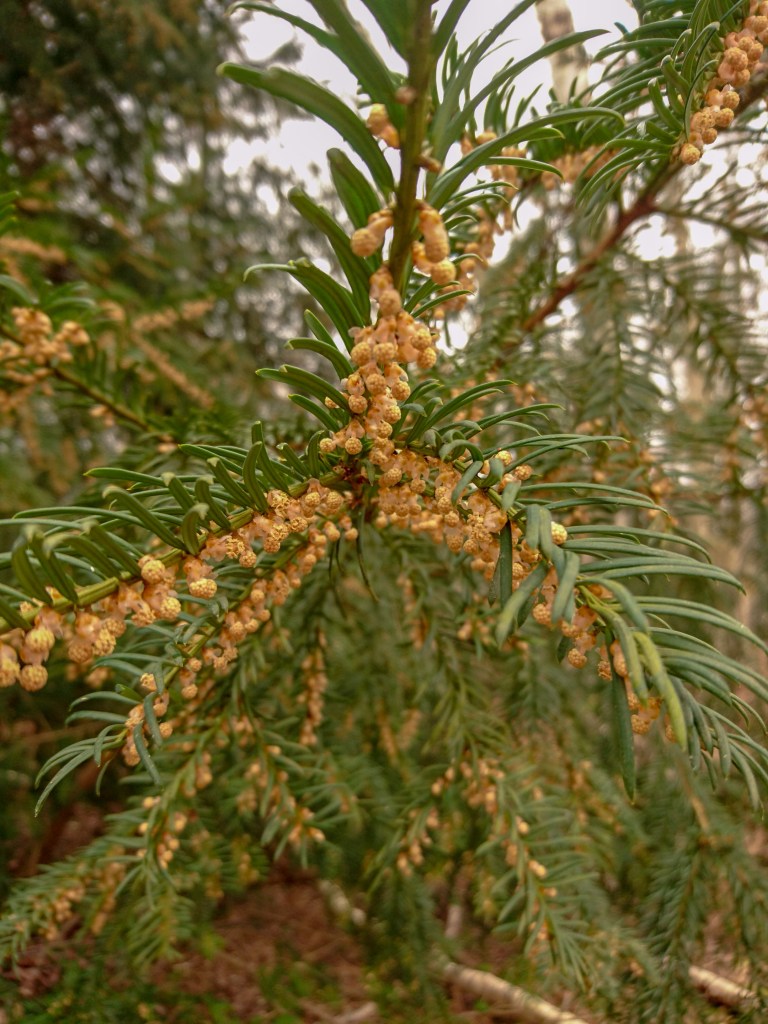A tree I really enjoy journeying with is the Yew tree, Taxus baccata. Typically associated with the Samhain season, I find myself really connecting with this tree in Spring too.
Like Willows, Yews are dioecious meaning that trees are either male or female. In the Spring the male trees produce an array of flowers covered with golden pollen. This pollen is carried by the wind to the smaller flowers of the female trees that will go on to produce the red berries in the Autumn.










